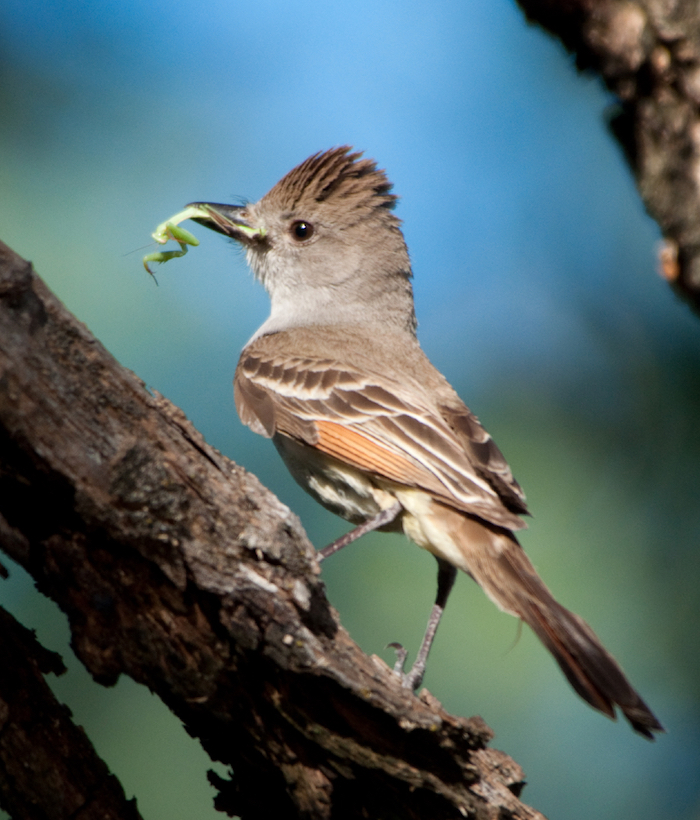
Ash-throated Flycatcher with Praying Mantis
G-r-rick! G-r-rick! The woodland call of the ash-throated flycatcher manages to sound both dry and optimistic, and this bird has reason to feel both. It is well adapted to the summer conditions of the arid west.
Although it sports a hipster beanie and jaunty colors–a sulphur-yellow belly, burnt orange in the wing, and a red-brown tail–you are apt to hear the bird before you see it. From a perch or in flight, its frequent calls abound in our north state woods.
These birds are up from coastal Mexico, reversing the summer vacation travels of many pre-Covid Americans. But of course they are here not to vacation but to raise their families on the abundant insects of the season. Unlike many kinds of flycatchers, they rarely capture their meals out of the air. Rather they perch in the understory, study the foliage and bark near them, and then hover to pick their insect prey from the plant.
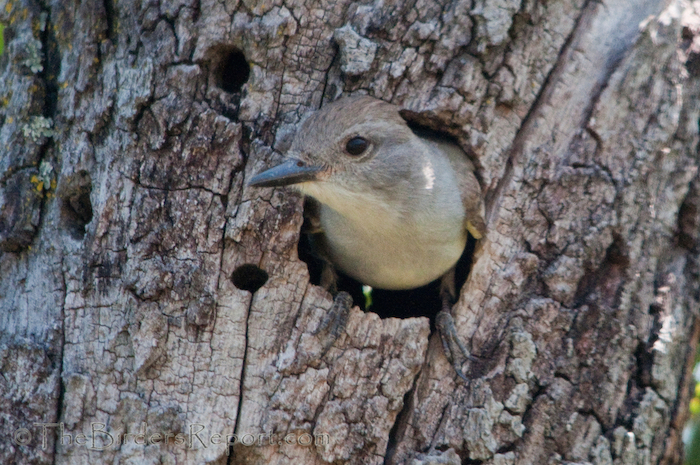
Ash-throated Flycatcher at Natural Cavity
Gleaning insects is a service that should not go unrewarded, and trees, particularly oaks, generously provide cavities that the birds use as nest sites. Along with oak-rot hollows, ash-throated flycatchers readily nest in cacti cavities, woodpecker holes, nesting boxes, drain pipes, or the deep pocket of a jacket left hanging over the back fence.
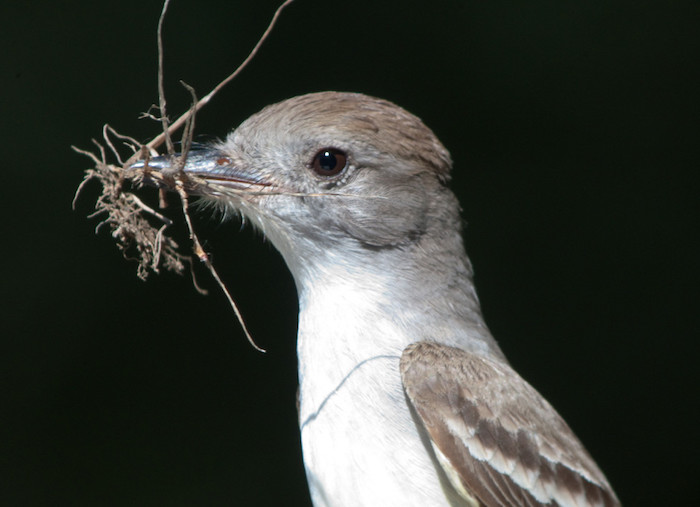
Ash-throated Flycatcher with Nesting Material
Both parents build the nest of various plant fibers. The mother bird incubates her handful of eggs for two weeks, and both parents feed the young about sixteen days more, as their offspring grow from naked to feathered to feeding themselves. Though just the size of grocery-story zucchinis, they develop the mesomorphic form of strong flyers–big-breasted due to powerful flight muscles.
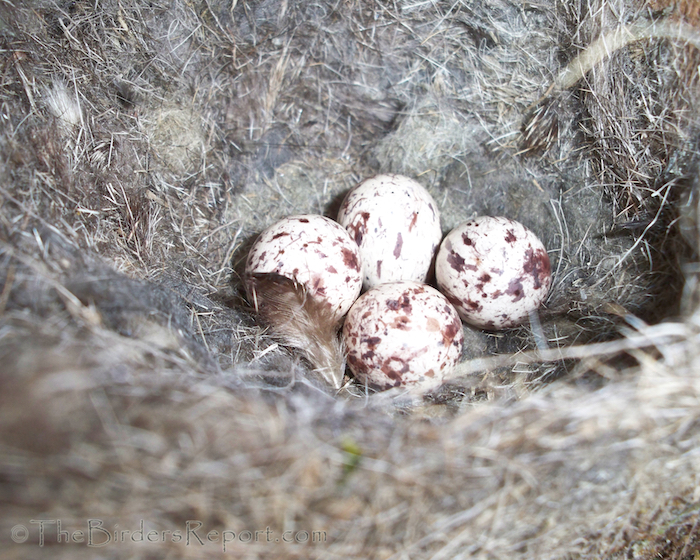
Ash-throated Flycatcher Eggs
Beginning as soon as July and lasting into early fall, those muscles will propel the birds on a fifteen-hundred mile migration. The North State insect populations wane, and the flycatchers head for buggier turf to power their next month-long phase of life–shedding their worn feathers and growing new ones.
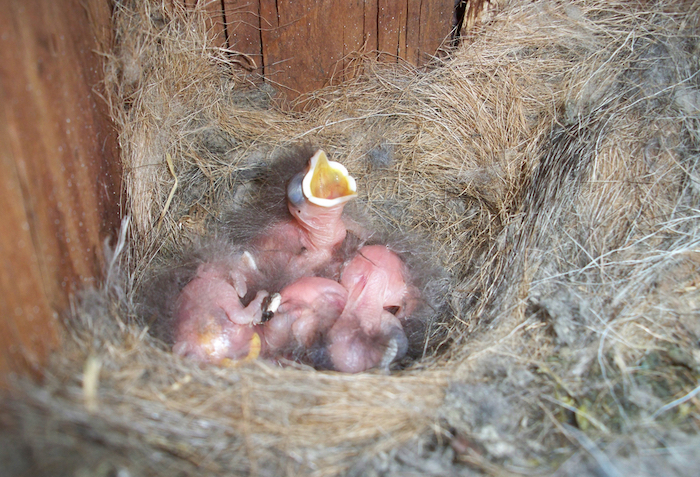
Ash-throated Flycatcher Nestlings
Several qualities feed the optimism that ash-throated flycatchers warrant. Their ready adoption of human artifacts for nesting sites serves them well. Also, they usually line their nests with mammal fur, which is soft for the nestlings but less insulating than feathers and so may reduce overheating that feathers could cause as the seasons warm. Further, ash-throated flycatchers do not need to drink water; like some other desert dwellers, they manufacture enough for themselves in the process of digesting their food. In this warming arc of the world, ash-throated flycatcher populations have grown about 1% per year over the last fifty years.

No comments yet.